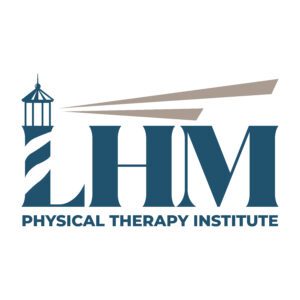
Desk Work: Why ‘Perfect Sitting Posture” Isn’t the Goal for Your Workday
Megan Romano, PTA, CEASII, Workers Comp Specialist
Spoiler alert: It’s not realistic—or even healthy—to expect perfect posture for an entire 8-hour workday.
Sure, ergonomic setups help. Think fully adjustable chairs, standing desks, document holders, and angled keyboards. These tools are essential for aligning your workspace to your body, whether you’re working from home or in an office. But even with the perfect setup, staying in one position too long leads to postural muscle fatigue, which can cause:
- Stiff neck
- Headaches
- Upper back tightness
- Lower back soreness
So, what’s the solution for desk workers? Micro-breaks and targeted movements.
Taking just 1–2 minutes every hour to move, stretch, and reset your posture can make a huge difference. Below are five of our favorite exercises to help reduce symptoms of postural fatigue and keep you feeling energized throughout your workday:
Top 5 Desk-Friendly Exercises
- Chin Tucks
Gently draw your chin straight back (like you’re making a double chin). Hold for 5 seconds. Repeat 10 times.
Great for reducing neck tension and promoting good head alignment. - Angel Stretch
Stand with your back against a wall, arms raised in a “goal post” shape. Slowly raise and lower your arms while keeping them in contact with the wall.
Improves shoulder mobility and posture. - Standing Back Extensions
Place your hands on your lower back and gently arch backward. Hold for 5–10 seconds. Repeat 5–10 times.
Counteracts prolonged sitting or bending. - Seated Upper Back Extensions
Sit at the edge of your chair, clasp your hands behind your head, and gently lean back over the backrest.
Relieves upper back stiffness. - Scapular Retractions
Sit or stand tall, squeeze your shoulder blades together, hold for 5 seconds, and relax. Repeat 10–15 times.
Strengthens postural muscles and reduces shoulder strain.
(Pro tip: Set a timer or use an app to remind yourself to move once an hour!)
Takeaway:
Perfect posture is great in theory—but work isn’t always perfect. The key is knowing how to recognize the signs of fatigue, how to prevent injuries, and how to respond when your body tells you something’s not right.
Need help building a more ergonomic workspace or reducing pain during your workday? Our team of physical therapists can help you create a personalized plan to stay safe, productive, and pain-free on the job.






